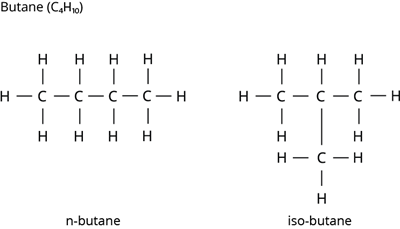PDF chapter test TRY NOW
Carbon compounds are present in the food we eat, medicines we take, clothes we wear, domestic and automobile fuels, paint, cosmetics, automobile parts, and other products we use.
We use an infinite number of carbon compounds on a daily basis as it is an inseparable component of human life.
Carbon compounds outnumber all other elements in the periodic table in terms of the number of compounds found in nature and synthetically produced.
Carbon compounds outnumber all other elements in the periodic table in terms of the number of compounds found in nature and synthetically produced.
There are more than 5 million carbon compounds. Its unique properties, such as catenation, tetravalency, and multiple bonding, allow it to combine with itself or other elements such as hydrogen, oxygen, nitrogen, sulphur, and so on to form a large number of compounds.
All carbon compounds are made up of covalent bonds. These are the compounds that are referred to as organic compounds.
Note: Organic compounds are any molecules containing the carbon element.
In this section, we will study in detail about Carbon and its compounds:
Everything in this world has such unique characteristics, and organic compounds are no exception. Some of them are as follows:
1. Organic compounds have a complex structure and a high molecular weight.
Note: Polymers are small units of monomers linked together where the structure is complex to write.
Proteins, carbohydrates, lipids, and nucleic acids are the most complex types of organic compounds with high molecular weight and complex structures.
In these examples, proteins are polymers of amino acids that contain carbon, nitrogen, oxygen and hydrogen. Hence, we can now say that organic compounds have a complex structure and a high molecular weight.
2. Organic compounds are mostly insoluble in water but soluble in organic solvents like ether, carbon tetrachloride, toluene, etc,.
Organic compounds dissolve well in solvents with similar properties to their own. This principle is often referred to as "like dissolves like", which means that polar molecules dissolve well in polar solvents and non-polar molecules dissolve well in non-polar solvents.
3. Organic compounds are highly inflammable.
Organic compounds are made of carbon and hydrogen, which easily reacts to oxygen, causing them to be highly inflammable.
4. In comparison to inorganic compounds, organic compounds are less reactive. As a result, organic compound reactions proceed at a slower rate.
A stable organic compound is typically very unreactive, and it takes a significant amount of effort to get it to react. When we break organic compound bonds, we are breaking covalent bonds, which are much stronger than ionic bonds.
5. Organic compounds form covalent bonds.
Carbon's outermost shell contains four electrons. As a result, carbon completes its octet by sharing its four electrons with other carbon atoms or atoms of other elements, resulting in the formation of a covalent bond. We know that organic compounds contain carbon in them, and so they form covalent bonds.
6. When compared to inorganic compounds, organic compounds have lower melting and boiling points.
The forces present in organic compounds (covalent bonds) are held together by weak Vander Waals forces. A small amount of energy can significantly weaken this force, which is why carbon compounds have low melting and boiling points.
7. Organic compounds exhibit isomerism.
Isomerism is a phenomenon in which a single molecular formula represents several organic compounds with different physical and chemical properties. The differences in structural or spatial arrangements lead to isomerism in organic compounds. The compounds that exhibit this phenomenon are known as isomers. For example, Butane has 2 chain isomers such as n-butane and iso-butane have the same molecular formula C_4H_10 with different structural and chemical properties.

Chain isomerism
8. Organic compounds are volatile in nature.
Volatile organic compounds are organic chemicals containing carbon with a high vapour pressure at room temperature. This high vapour pressure is due to their low boiling point, which allows molecules to evaporate from liquid to gas phase. This property is known as volatility.
9. Organic compounds can be synthesised in a laboratory.
Organic synthesis is the use of chemical reactions to create more complex organic molecules from simpler ones. New molecules are frequently synthesised to study their chemical properties or have intentionally designed molecular behaviour, such as pharmaceuticals or new materials.
Note:
Urea or carbamide (CH_4N_2O) is widely regarded as the first organic compound synthesised from inorganic chemicals. Friedrich Wohler, a German chemist, created urea artificially in 1828 by treating silver cyanate with ammonium chloride.
